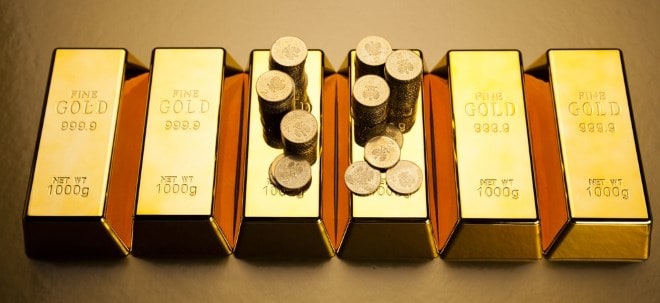von Marketwatch-Bär Paul Farrell
www.marketwatch.com/story/...-signal-impending-stock-crash-2014-05-08
.... Here are the 10 high-risk bubbles GMO sees as warning signals that another costly crash is dead ahead:
1. This-time-is-never-different bubble
Throughout history, market mania is “rationalized with the argument that history is no longer a reliable guide to the future.” In the 1920s it was a “new era.” In the ‘90s a “new paradigm.” Today Wall Street’s doing it again: “U.S. profit margins are currently at peak levels and the profit share of GDP in the United States is more than two standard deviations above its long-term mean based on data going back to the 1920s.”
2. Moral-hazard bubble
“Speculative bubbles tend to form when market participants believe that financial risk has been underwritten by the authorities.” Remember the “Greenspan Put:” In the late 1990s Wall Street was convinced the “Fed would support falling markets.” Greenspan “wasn’t going to act against the bubble in technology stocks.” Fed policy hasn’t changed much, they “put a floor under asset prices, encouraging investors to take on more risk.” As a result, household wealth has “rebounded to a near-record level of 472% of GDP [aber sehr ungleich verteilt... A.L.), nearly 100% above its long-term mean.” And today, banks still expect “perpetually low interest rates.”
3. Fed’s 24/7 easy-money bubble
Chancellor tells us: “Great speculative bubbles have generally been accompanied by periods of low interest rates.” For over a decade Greenspan’s policies “inflated the U.S. housing bubble.” Then after the 2008 banking collapse, Bernanke’s cure was “more of the same,” while “real interest rates have been maintained at negative levels.” In addition, quantitative easing kept long-term rates artificially low, inflating home prices and growth-stock valuations, further inflating high-risk asset bubbles.
4. Perpetual growth bubble
Back in the ‘90s dot-com bubble, tech stocks were experiencing rapid “S-curve” growth while investors were “encouraged to value the “real options” of Internet stocks from future income streams yet to be conceived. Same today. Hot stocks in social networking, electric cars, biotechnology, Internet, “have been boosted by similar wishful thinking.” Warning, throughout history, future earnings estimates kill future bubbles.
5. Zero-valuation asset bubbles
Since the 17th century Dutch tulip mania, “most speculative markets” have had no income to anchor a speculator’s imagination. Today’s electronic age makes it worse. Bitcoin “soared by 5,500%” in 2013. In fact, Chancellor warns most “recent stock market darlings — Netflix, Facebook, Tesla, and Twitter — have little or nothing in the way of profits.” Even with margins dropping, Amazon was up nearly 60% in 2013. It’s still “the poster child for a market more obsessed with growth than profitability.”
6. ‘Gilded Age’ bubble revival
Throughout history “asset price bubbles are associated with quick fortunes, rising inequality, and luxury spending booms,” warns Chancellor; excessive, out-of-control “conspicuous consumption.” Since the 2009 bottom, the art bubble, “evident before the financial crisis, has returned.” Example, a Jeff Koons “Balloon Dog” sculpture auctioned at $58 million, even though it was one of five he had made in a factory. “The same month, a painting by Francis Bacon sold for $142 million, the highest price ever paid for any work at auction.” Yes, the Gilded Age of the late ‘20s is back. More bad news.
7. New junk-bond-mania bubble [Siehe auch # 591]
Another dangerous trend: “Manic markets are often marked by a decline in credit standards,” says Chancellor. The real estate bubble exploded Wall Street’s love of subprime mortgages, “but it hasn’t diminished the appetite for low quality U.S. credit.” Today investors are buying “the lowest yields for junk bonds in history.” Quality is deteriorating. “Last year, nearly two out of three corporate bond issues carried a junk rating.” Even Fed boss Yellen has “expressed concern about the manic leveraged loan market.”
8. ‘Irrational Exuberance’ bubble sequel
Yes, ‘90s “Irrational Exuberance” is roaring back: “Market sentiment have become very elevated over the past year.” The IPO market “has become particularly speculative.” First-day trading on new IPOs were up an average 20%. “Twitter rose 74% on the day it came to the market.” Yet, most of the recent IPOs not only had no profits, many, especially biotechs, haven’t “even got around to generating anything by way of revenue.”
9. Corporate-insider-trading bubble [siehe auch # 591, 592, 593]
“Other sentiment measures have been telling the same story” according to Chancellor’s GMO research team: Corporate insider trading, a “reasonably good indicator of management’s view on the intrinsic value of their companies” recently “climbed to near record levels.” Equity mutual funds “picked up lately.” And “margin debt as a share of GDP is close to its peak level.” All scary stuff.
10. Composite market sentiment index
GMO’s composite index of 20 sentiment indicators has “reached an extreme level, fast approaching two standard deviations above its long-run average.” Since the 1950s that extreme has only been exceeded twice, in 1968 during the “Great Garbage Market” and in the late ‘90s dot-com mania.
“Great bubbles tend to coincide with strong credit growth,” says Chancellor. So far that’s missing. We need it before a “full-blown stock market bubble,” and right now “the credit cycle is not close to a peak.” So unfortunately, the Fed will probably passively watch while a “full-blown stock market bubble” builds to critical mass.
In short, Yellen will do exactly what Greenspan and Bernanke did earlier ... fail to plan ahead ... passively endure more irrational exuberance mania ... waiting for the ticking time bomb to blow up ... before finally stepping in ... cleaning up their mess ... again ... bailing out incompetent banks ... while letting the taxpayers suffer through the third major crash this century... third recession ... third megatrillion loss of Main Street’s retirement market cap..... |


 Thread abonnieren
Thread abonnieren


